https://www.youtube.com/watch?v=Vv85cQNb8bE
How to Create French Mattress Cushion
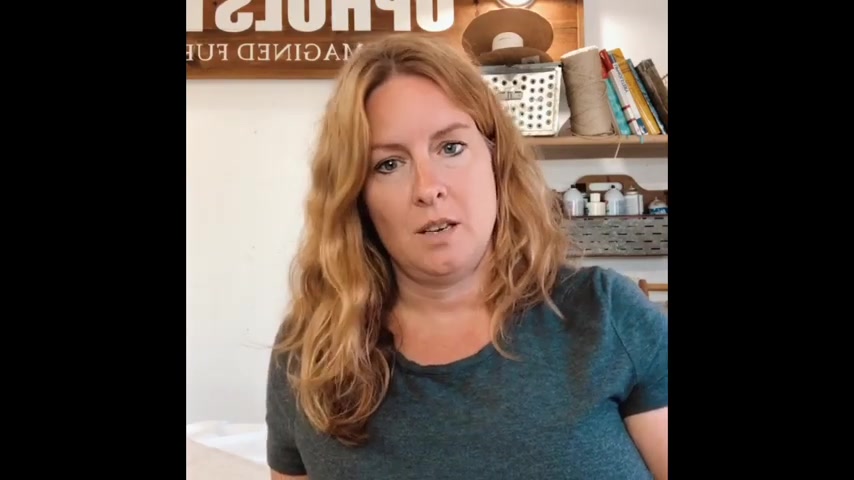
Hey guys , it's Michelle with blue cabinet upholstery .
And today I'm gonna share tips on making French mattress cushions .
So the first thing we do is we figure out what size to cut the foam and the fabric .
Um After experimenting with several different methods , I finally settled on just doing it the way I do a regular cushion .
You don't need to add tons of Dacron or anything like that .
Um The stitch will go through the foam and create that nice look .
So , um there's a video on my youtube , um go check it out and explains in detail how I make my cushions and especially how I oversize foam for longer cushions .
So check that .
Here's the supplies that you need .
First , you start with a good quality foam .
Um , density and thickness depends on what your client prefers , but I typically use a medium density um 3 to 4 inches depending on the size of the bench .
And then I wrap it in Daron .
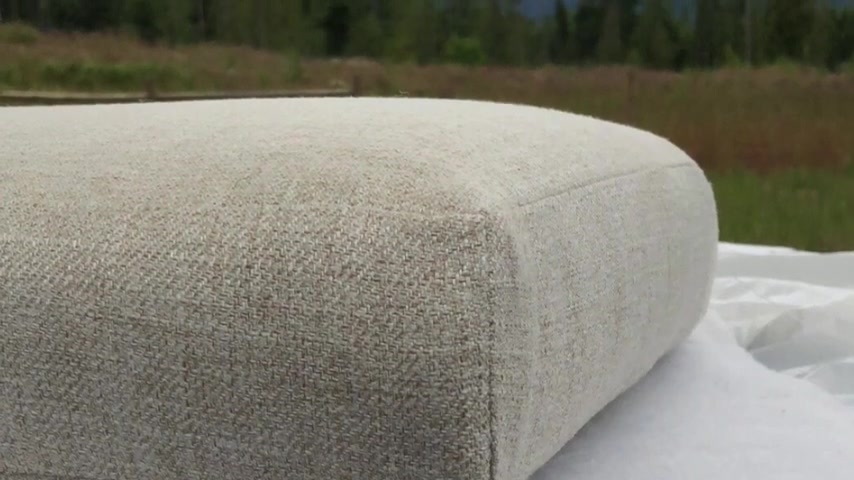
Next up , you'll need hand stitching thread , which is these guys in the middle and a curved needle to make the decorative stitch along the edge and then the button nylon button tufting twine and a long needle is how that you will make either the um X style stitch for the tufting detail or you can use it to pull your buttons through if you're using buttons .
So you can see with my method , you're going to start out with a really tight looking cushion .
If you want yours to look a little squishier or be easier to stitch , add one half inch to my boxing with recommendation .
So tip number two is if you're a right handed person , start stitching from the right to the left .
So you wanna go this direction .
Um If you , if you go the other way , it's just gonna feel really awkward .
Another tip would be to add Dacron to the corners .
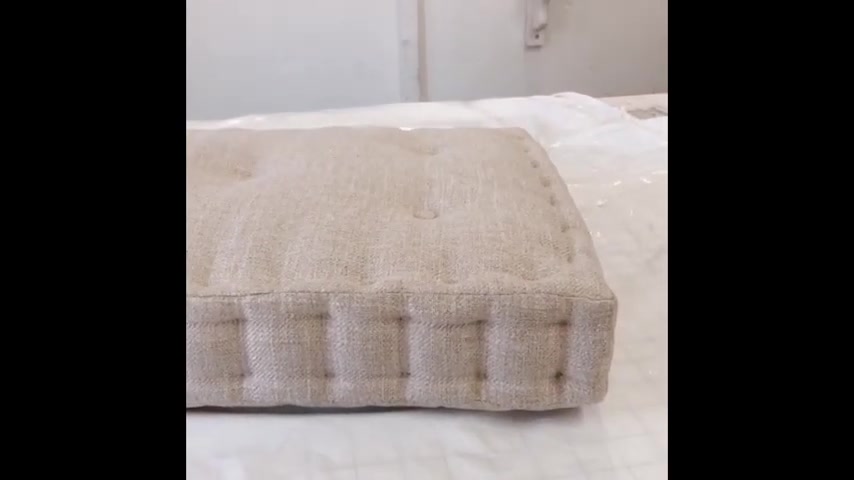
So after you insert the foam , um , just shove a little bit extra Dacron in the corners to fill them out because even though you , um , typically for a long cushion , you'll oversize the foam , they still tend to be a little puny in the corners .
So , um , I would just recommend adding a handful of Dacron stuffing it in there to get started with your stitches .
You'll want to measure every two inches and put a pin in .
And , um , depending on the length of your cushion , you may need to adjust that a little bit for the measurements to work out .
Um , but two inches is what I like to go for .
So you're using those pins as a guide for your stitch , come up on one side , go over a quarter inch and back down .
And then when you come down on the boxing , you want to make sure that those stitches line up so that you get that nice pull mark , um , on your finished cushion .
And then when you get a few stitches going , you just sort of squeeze and pull .
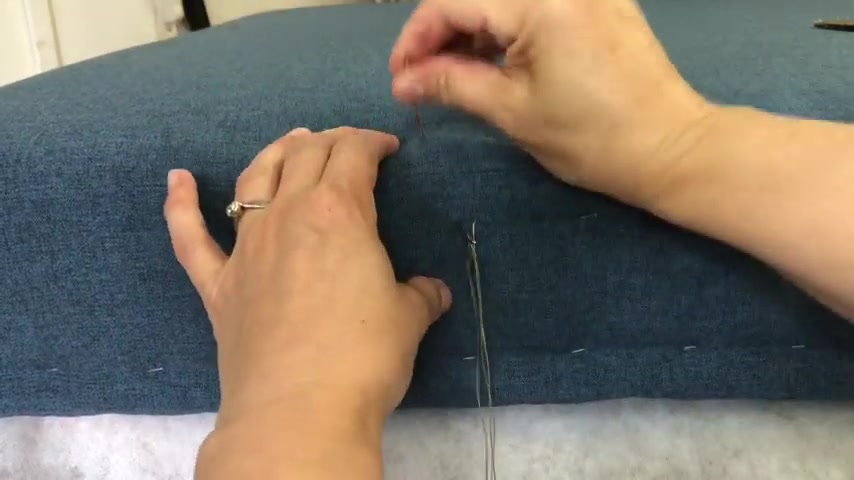
You don't wanna go too far or , um , it's really hard to get it to tighten up .
So just every , every three or four scrunch it up .
So here it's a , a larger cushion , it's five inches .
So I'm able to take a bigger stitch uh for a bigger roll on the edge .
Um , and I'm just using the previous line of stitches um as my guide .
And so I'm eyeballing it and I would , you know , I would just recommend when you're first starting out .
Definitely use pins .
You can also use pins on the boxing side and then my last tip would be to start on the back side .
So that would be the side that you hand stitched closed or maybe you put in a zipper .
Um That way you , you get a little practice in and your best stitches are on the finished front side .
Um That always seems to be like the last row , stitches is the best row .
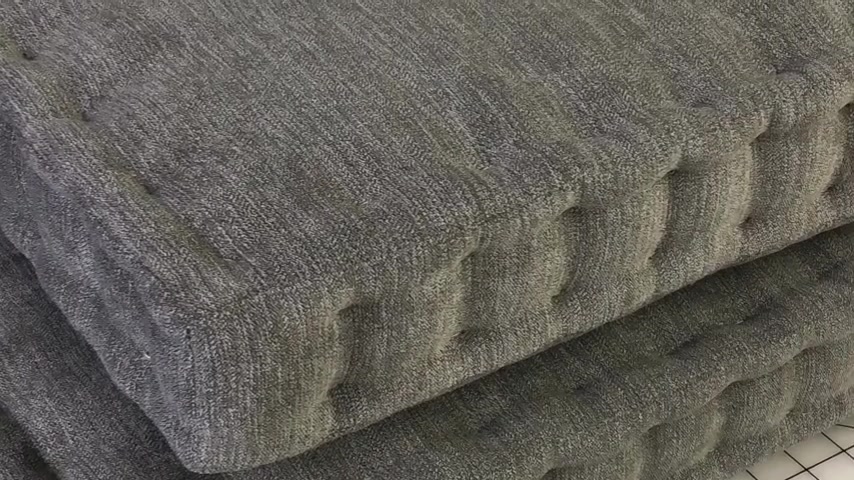
Different fabrics will give you different looks .
This was a stiffer velvet , so it has a firmer look to it .
It was a more typical fabric and I was able to make a bigger edge roll because of the five inch foam .
So it was just bigger all around and then you finish it off with uh button tufting and you can either use buttons or a stitch detail , uh any pattern diamond or square , whatever you would like .
I hope that was helpful for those that want to give it a try .
They are a lot of fun to make , even if they are a bit of work .
Are you looking for a way to reach a wider audience and get more views on your videos?
Our innovative video to text transcribing service can help you do just that.
We provide accurate transcriptions of your videos along with visual content that will help you attract new viewers and keep them engaged. Plus, our data analytics and ad campaign tools can help you monetize your content and maximize your revenue.
Let's partner up and take your video content to the next level!
Contact us today to learn more.